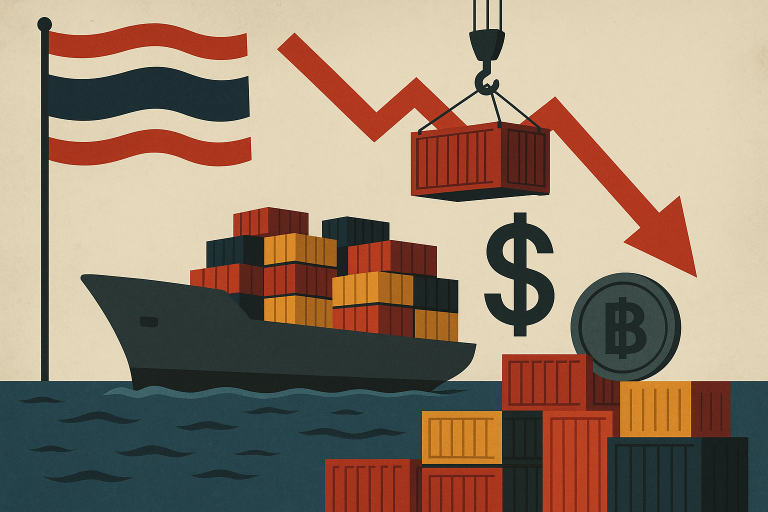Thailand’s export growth slowed sharply in August as US tariffs and a stronger baht began straining demand for key products. The Commerce Ministry reported a 5.8% rise in exports, the weakest pace in almost a year and below the 7% forecast by Bloomberg.
At the same time, imports surged 15.8%, pushing the trade balance into a deficit of $1.96 billion for the month, the first shortfall since April.
Officials now warn that momentum could continue to fade as frontloaded orders ease and global demand remains under pressure.
Exports lose momentum under tariff pressure
Between January and August, Thai exports rose 13.3% to $223 billion as US buyers stocked up before new tariffs imposed by President Donald Trump took effect in July.
That frontloading lifted earlier figures, but the boost is fading, and the Commerce Ministry’s Trade Policy and Strategy Office cautioned that shipments may even contract in the coming months.
The reduction of US tariffs to 19% from the originally threatened 36% has provided some relief, but the impact is still evident in trade flows.
US demand for agricultural products such as rice, rubber, and tapioca is softening, while electronics and electrical appliances remain one of the few categories with steady growth.
Currency strength adds new risks
Alongside tariffs, the appreciation of the Thai baht has emerged as a critical factor for exporters. The baht has climbed to its highest level since 2021, making Thai goods less competitive on the global market.
Local business groups have raised concerns and are urging authorities to consider measures to stabilise the currency.
The stronger baht coincides with rising competition from other markets. India’s expanded rice export policy, for instance, is putting downward pressure on Thai agricultural shipments.
Border trade disruptions in the region are also weighing on exports, while the slowdown in the US economy adds to concerns about weakening demand.
Import surge shifts trade balance
Thailand’s August import bill increased 15.8%, far higher than the 8.2% expected by analysts, signalling continued demand for foreign goods and inputs.
The surge pushed the trade balance into a deficit of $1.96 billion, reversing the surplus trend seen since April.
This shift highlights the twin challenge of weaker export growth and rising import costs, which may complicate policy responses in the months ahead.
Government response to safeguard trade
The Thai government has outlined measures to sustain exports by accelerating trade agreements, expanding shipments to untapped markets, and working with the private sector to mitigate risks of trade diversion.
The Trade Policy and Strategy Office also flagged prolonged border disruptions and subdued global consumption as ongoing threats that will need coordinated responses.
While the US tariff dispute has dominated headlines, the data now show that the combined effect of tariffs, currency appreciation, and regional competition could reshape Thailand’s trade outlook for the rest of the year.
Policymakers face the challenge of keeping exports afloat in a difficult global environment where momentum is already slowing.
The post Thailand’s exports weaken as tariffs, currency pressure weigh on trade appeared first on Invezz

